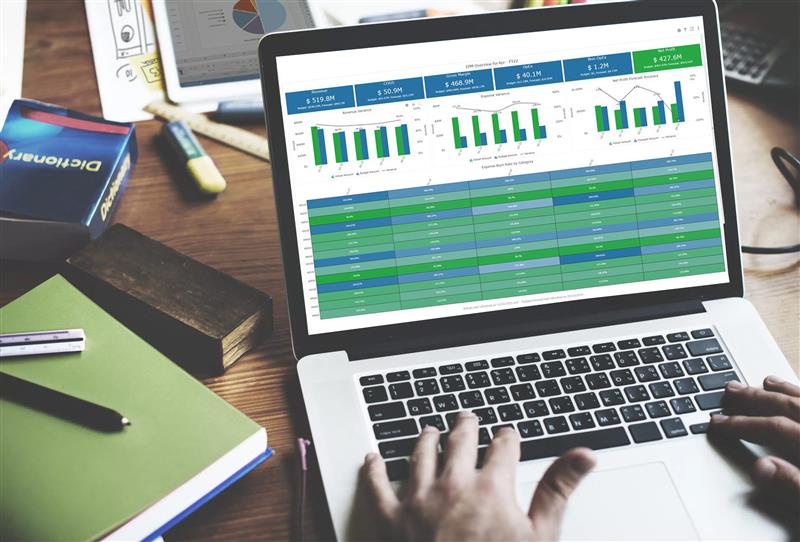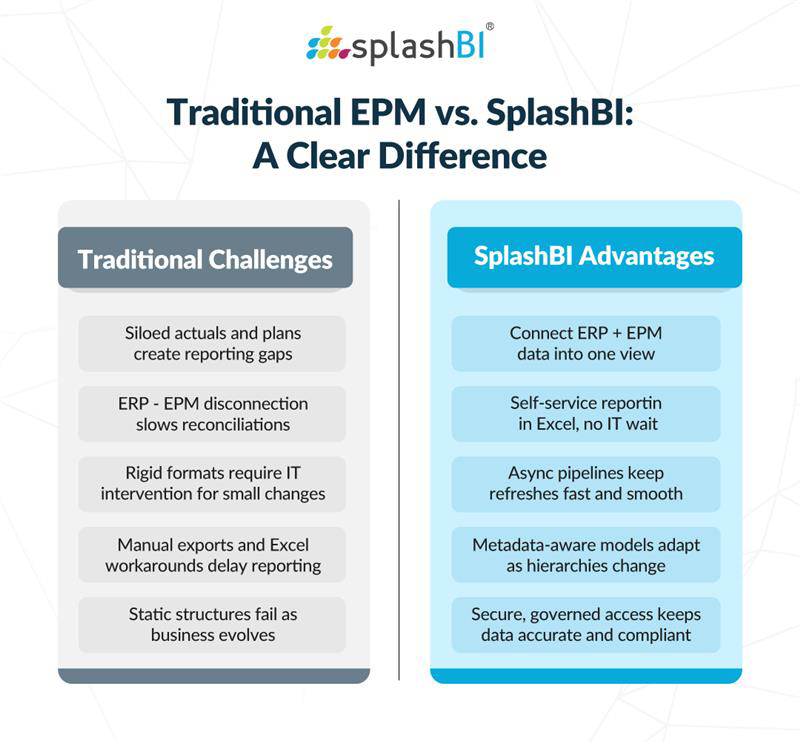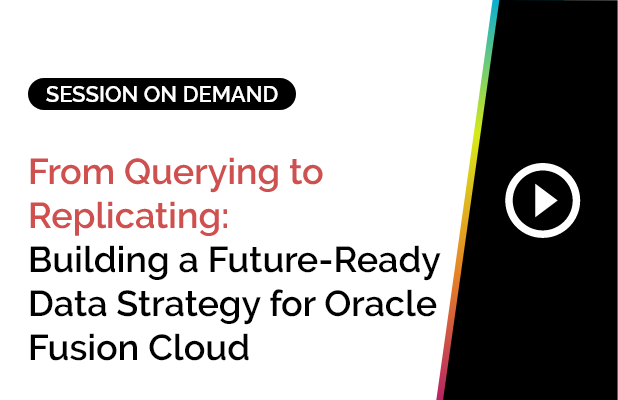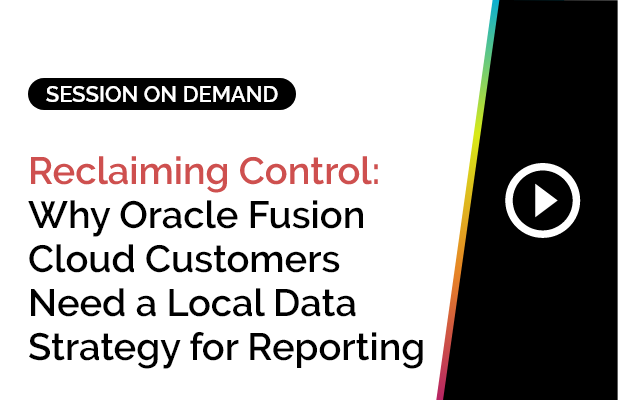Today’s Reporting Expectations
Finance teams today do more than close the books or track variances. They’re expected to be strategic partners that deliver timely, accurate insights that drive decisions across the business.
This means:
- Plan vs actuals, reporting on demand
- Drilldown from summary to subledger transaction details
- Self-service tools that eliminate bottlenecks and minimize IT dependency
- Flexible reporting structures that adapt to evolving business needs without the need for ongoing redesign or manual adjustments
EPM reporting structures often lag evolving business needs, placing added pressure on finance teams.
Why Traditional EPM Reporting Often Falls Short
Oracle EPM is a powerful planning platform, but traditional reporting often slows teams down:
- Disconnected EPM and ERP data models make actuals-to-plan reconciliation slow and difficult
- Rigid hierarchies and formats require IT support for even minor reporting changes, especially as business needs evolve
- Slow data extraction delays reporting cycles, often pushing teams back to Excel just to get answers
- Reporting structures lack the flexibility to adapt as the business changes—without rework or IT involvement
Too often, teams are left stitching together spreadsheets, waiting on IT, or giving up on EPM data entirely in favor of faster workarounds.
The Growing Role of Finance Ops and Data Teams
To bridge reporting and data gaps, many organizations are turning to finance ops and analytics teams. Positioned at the intersection of finance and data, these teams are focused on:
- Streamlining data flows between EPM and ERP
- Building scalable, governed reporting environments
- Equipping finance users with tools they can own without sacrificing accuracy or control
But even the most capable finance ops team can’t deliver results without a strong data foundation. Speed and flexibility depend on having the right infrastructure in place.
Reporting That Enables, Not Delays
Agile EPM reporting starts with data. When plans and actuals are connected in near real-time, structured for analysis, and accessible across tools like Excel, browsers, and mobile devices, finance teams gain real control.
A modern EPM reporting foundation includes:
- Asynchronous data extraction that maintains performance and avoids system slowdowns
- Metadata-aware pipelines that preserve hierarchies and mappings for accurate analysis
- SQL-friendly structures that let finance ops make reporting changes quickly and efficiently
- Secure, governed access so stakeholders see the right data in the right context
The result is reporting that keeps pace with the business and empowers teams to move confidently.
Steps Teams Are Taking
Forward-thinking finance teams are already laying the foundation for more agile, effective reporting:
- Unifying EPM and ERP data to create a single source of truth for budget vs actuals
- Automating extraction and transformation to reduce manual work and minimize risk
- Equipping finance users with intuitive tools and governed, self-service access
- Partnering with finance ops to build scalable frameworks that adapt as the business grows
This isn’t about replacing Oracle EPM. It’s about unlocking its full strategic value by making the data work for real-world reporting needs.
EPM Reporting Doesn’t Have to Slow Your Team Down
With the right data foundation, EPM reporting can become a source of speed, not a slowdown. Finance gains agility. IT gets peace of mind. And the business gets faster, more confident decision-making.
If your team is still wrestling with rigid tools, slow processes, or Excel workarounds, it’s time to rethink what EPM reporting should look like.
You don’t need to rip and replace. Just rethink the foundation.

Corey Nason
Solutions Manager, SplashBI
With 36 years of consulting experience across industries and functions, Corey Nason brings deep cross-functional insight to complex business challenges. He has spent the last 25 years specializing in Business Intelligence and Reporting, delivering scalable solutions to clients of all sizes. At SplashBI, he leads strategic EPM initiatives.














